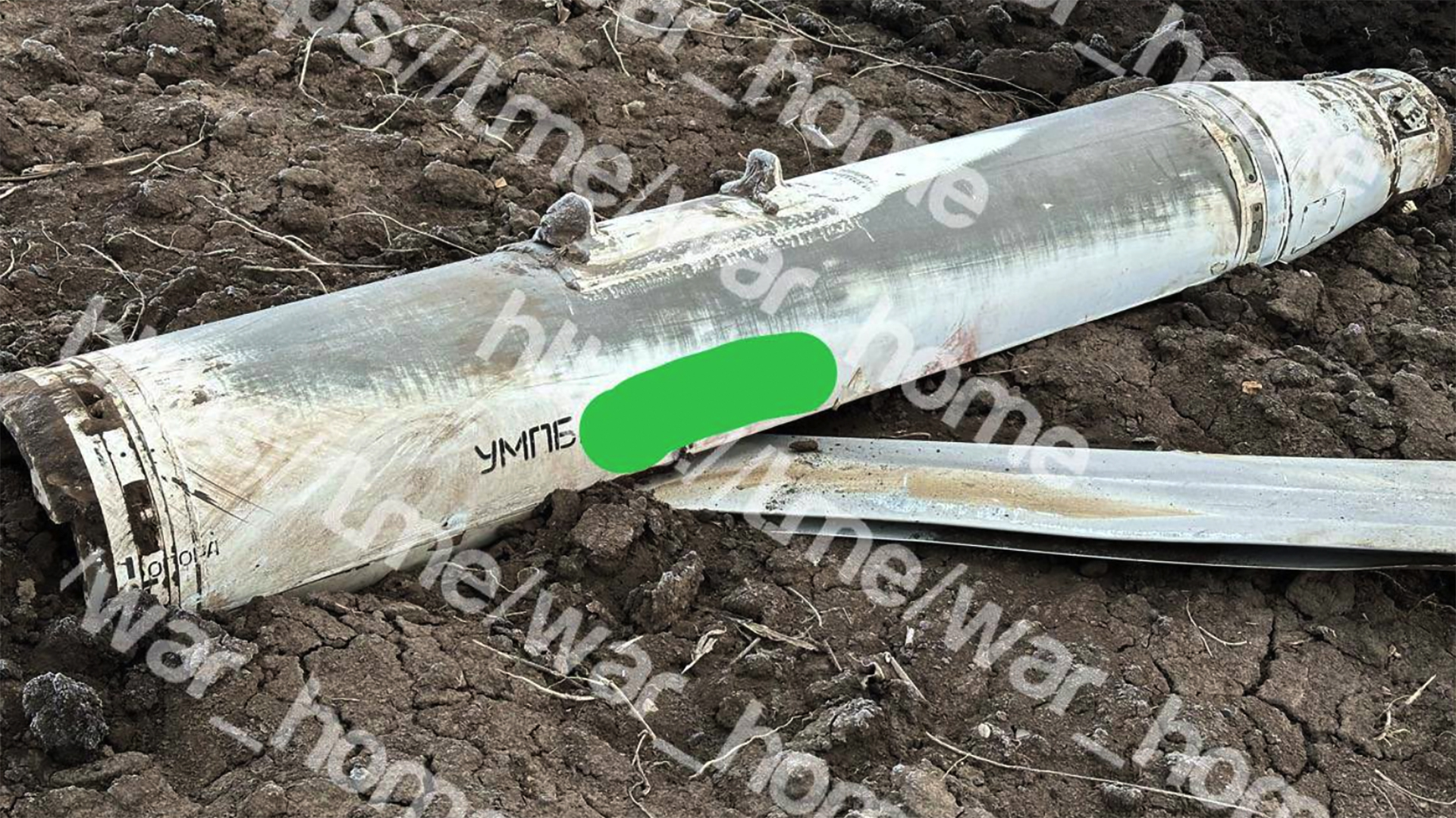An apparently new Russian standoff weapon has arrived on the Ukrainian battlefield, a winged precision-guided bomb that is rumored to be suitable for launch from aircraft and from ground-based rocket artillery.
Details about the weapon are still limited but all the evidence so far points to continued Russian efforts to provide cheaper alternatives to cruise and ballistic missiles, as well as giving its tactical aircraft a better chance of survival against Ukraine’s ground-based air defenses.
If it can also be launched from the ground, it would provide precision extended reach for Russian rocket artillery systems without the need to risk tactical aircraft at all. This could be especially useful for striking time-sensitive targets at standoff ranges, such as artillery positions and air defense systems. Russia has had few options for this critical capability in the past.

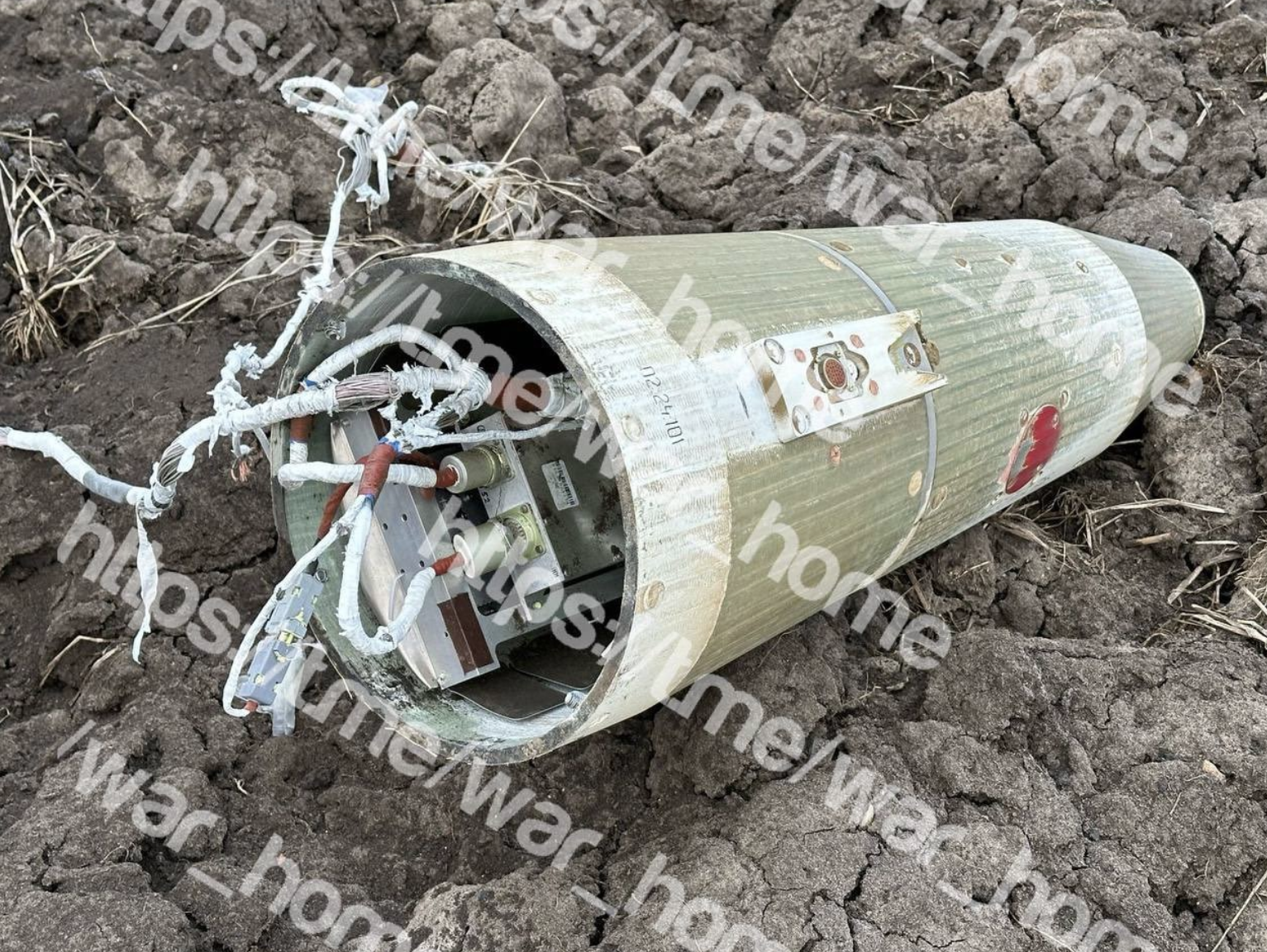


Photos of the previously unseen weapon began to circulate on social media recently, seemingly showing the wreckage of two of the bombs, although when and where they were recovered remains unclear. According to Ukrainian military bloggers, the guided bomb is known as the UMPB, a likely translation of which is Universal Glide Bomb Munition. Other accounts suggest the full designation of the weapon is UMPB D-30SN.
Some have posited that the UMPB could be a method of adapting an unguided bomb into a precision munition with a degree of standoff range. In this respect, it would have clear parallels with the well-established but far cruder UMPK, or Unified Gliding And Correction Module, which, since its introduction around early 2023, has become a particular menace to Ukrainian air defenses.
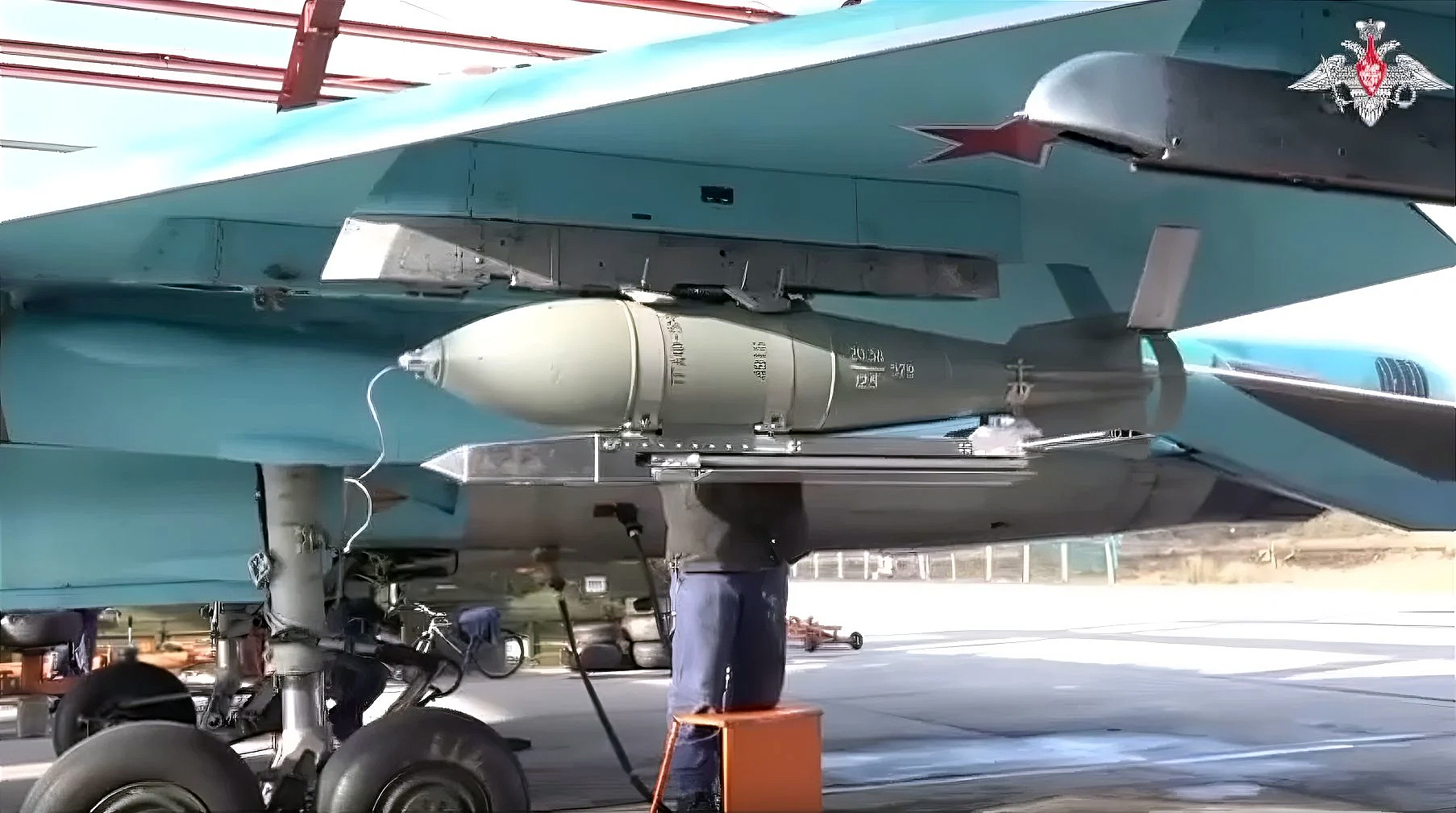
However, while the UMPK consists of a wing kit and precision guidance package that’s essentially bolted onto one of several different freefall bombs, the UMPB appears to have a slicker, far more elegantly integrated design.
Unconfirmed Ukrainian reports suggest it’s based around a 551-pound FAB-250 freefall bomb, but this is contained within a streamlined body, to which are attached pop-out wings and a tail section with ailerons and rudders; however, the size and construction of the bombs in the wreckage would seem to rule that out. Other observers have suggested that the weapon may be based around the KAB-250, another 551-pound weapon, one of Russia’s new-generation laser-guided bombs. Russian accounts, meanwhile, describe a proprietary 220-pound warhead.
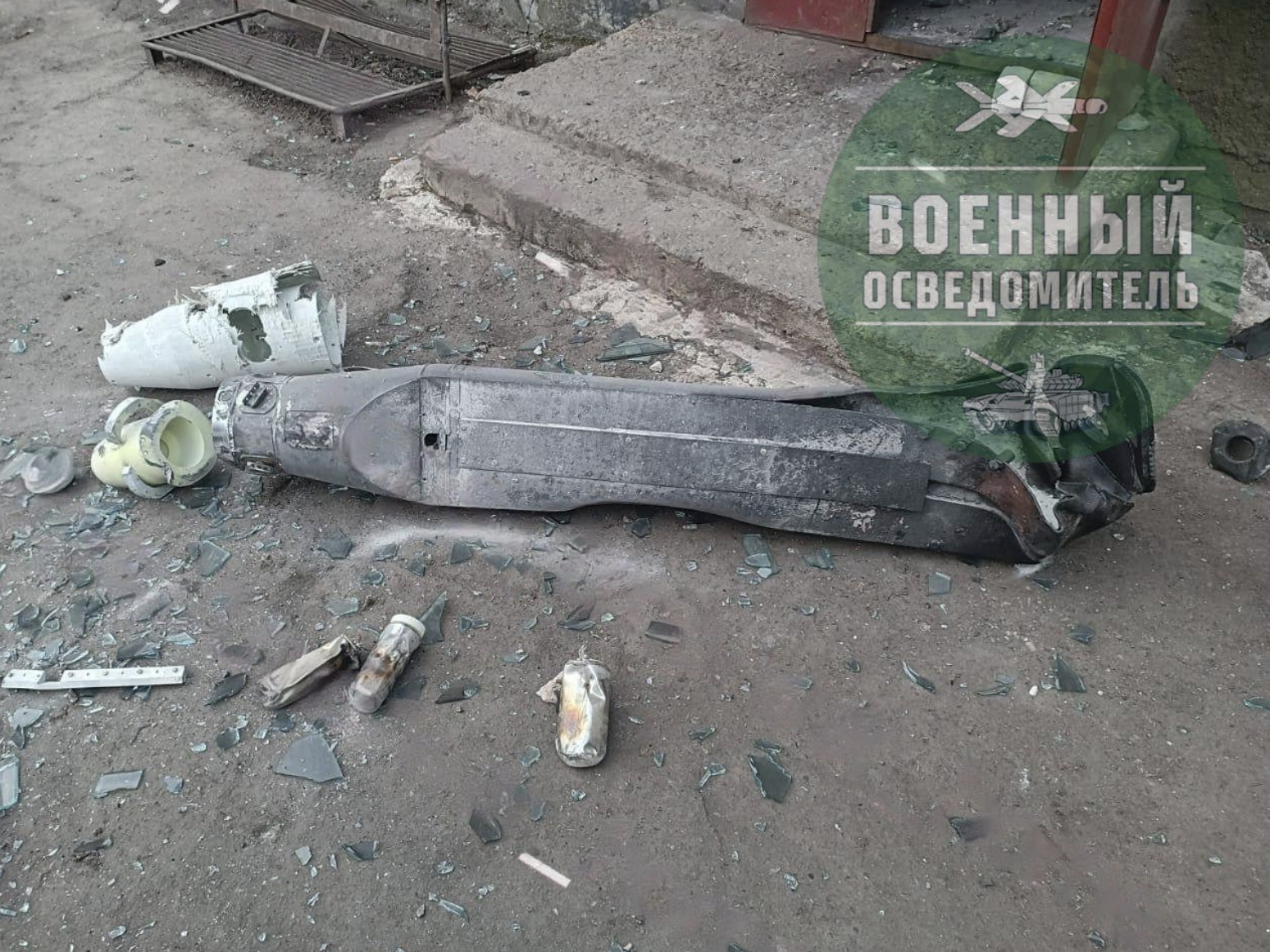

Judging by the images we have seen, the latter looks far more plausible as this appears to be a relatively small weapon. In other words, it doesn’t look like it is a kit attached to an existing dumb bomb at all. It may share a warhead with another existing weapon, but this munition looks to have been designed as a purpose-built glide bomb. Its size and design, as well as how it could be delivered, point to this being something akin to a Russian version of a GBU-39 Small Diameter Bomb, which is available for air and ground launch. Ukraine has received the ground-launched variant of SDB, the GLSDB.
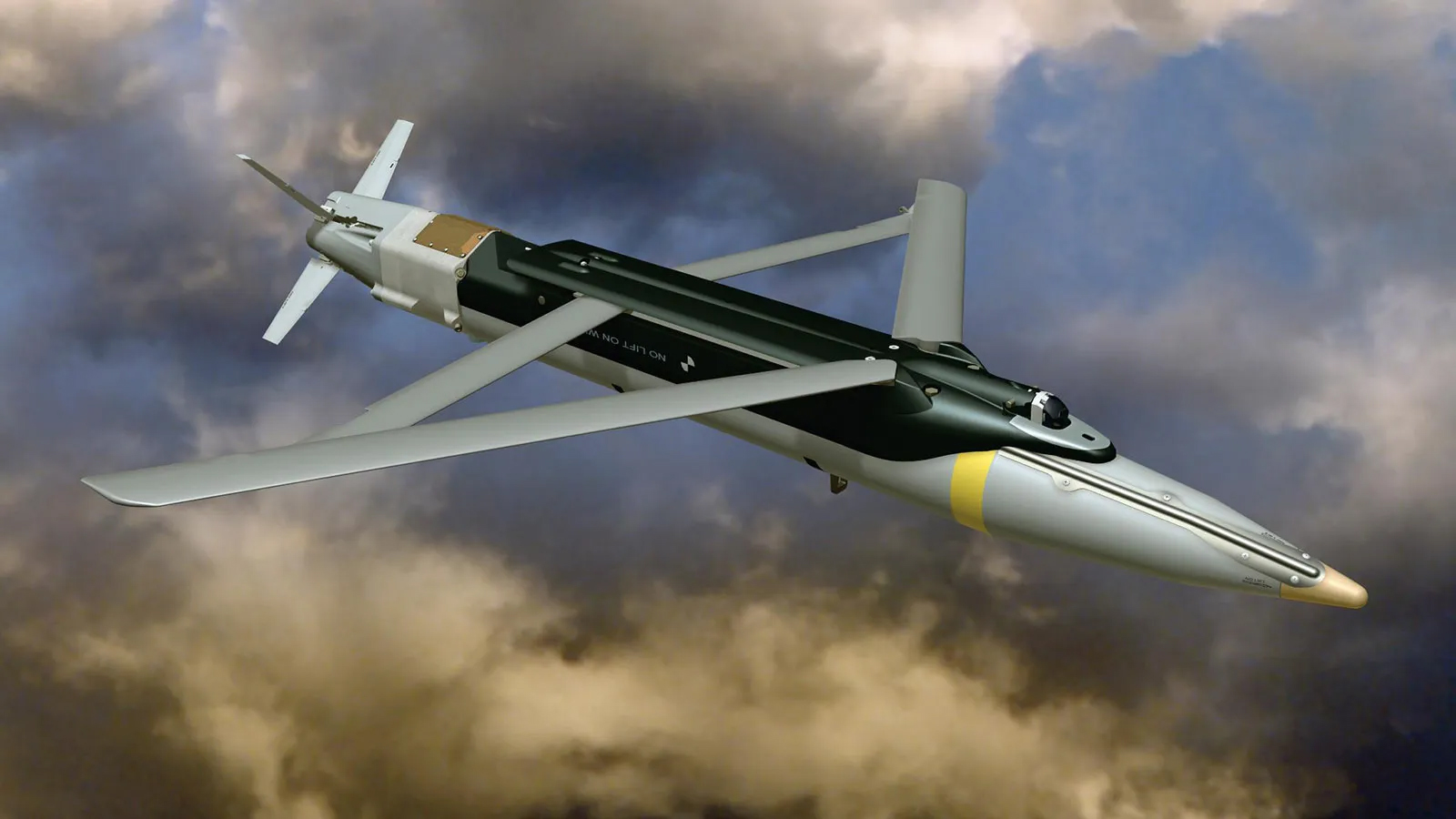

The guidance system on this new weapon is said to be of the Kometa type, which uses both inertial and satellite navigation.
The Kometa system is already used in the UMPK series and has also appeared in an improved version of the Iranian-designed Shahed long-range one-way attack drones used by Russia. The fact that the satellite navigation receivers are combined with an inertial navigation system means it can overcome the kinds of electronic warfare jamming that are now increasingly being employed by Ukraine.
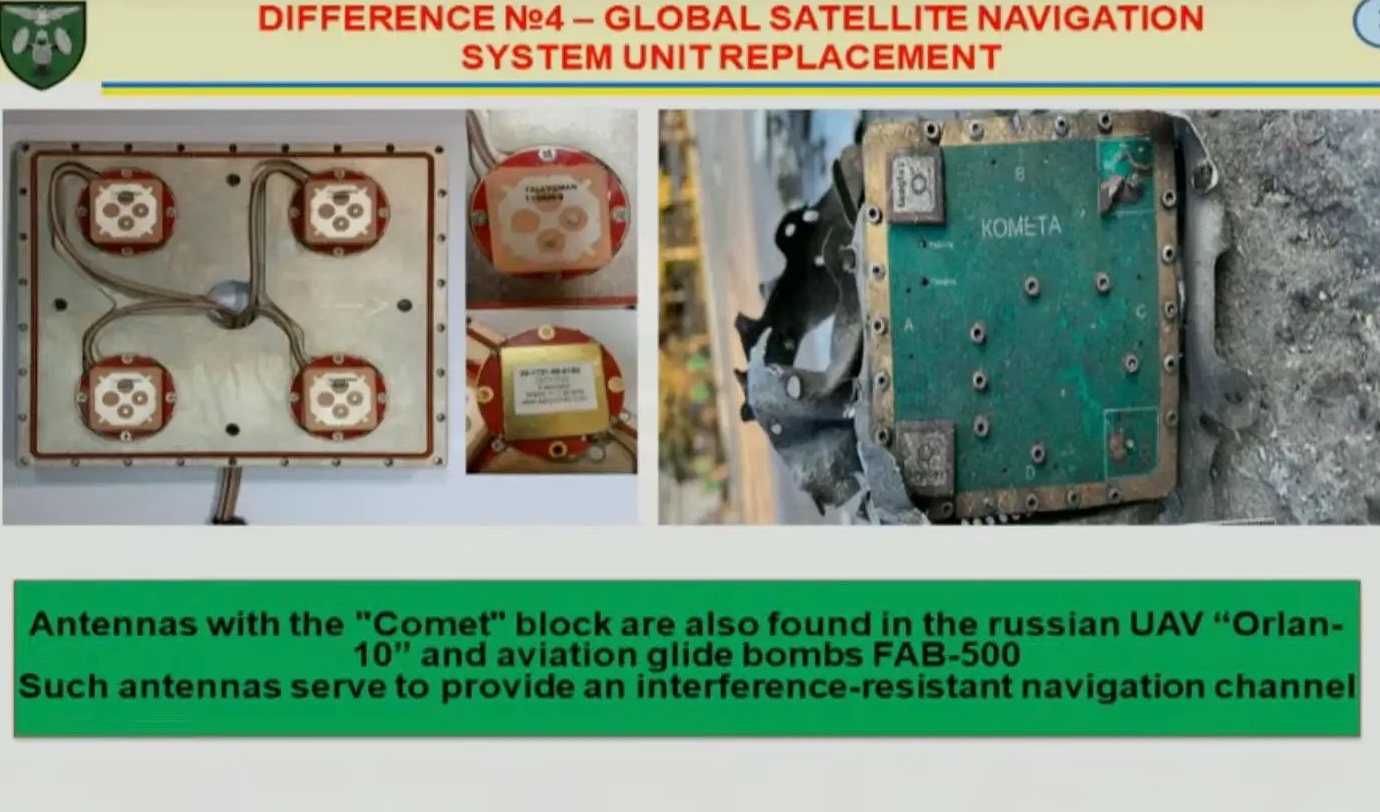
There have also been suggestions from Ukrainian military bloggers that the UMPB may have a powerplant, for even greater range, consisting of a turbojet engine and fuel tank suspended below the weapons’ body. The available photos don’t appear to offer any evidence of this. Based on the concept of operations for the UMPK, launch from an appropriate altitude or with the help of a rocket booster should already provide a useful standoff range.
The recovered wreckage apparently includes a manufacturing date of February 2024, suggesting that this is a very new weapon.
The UMPB appears to be a Russian effort to field a lower-cost, stand-off, precision strike weapon. Such a weapon could provide the ability to strike targets surgically behind the front lines without having to use far more expensive and longer-reaching weapons. Tactical standoff missiles in this class have seemingly been in relatively short supply as Moscow’s full-scale invasion of Ukraine dragged on. One-way attack drones, namely Shahed-136s, are also better used for longer-range, coordinated strikes and are more vulnerable to air defenses.
It’s also possible that the UMPB could be used in the decoy role, equipped with a radar reflector and possibly an expendable electronic warfare payload, to help other glide bombs and other munitions make it to their targets, as well as stimulate air defense so they can be targeted.
While there has been some evidence of Russia using examples of new-generation tactical standoff missiles in Ukraine, there remain serious questions about the country’s ability to produce these in significant numbers.
As we have detailed previously, there have been multiple accounts suggesting that Russia is very much feeling the effects of crippling international sanctions, limiting its ability to manufacture high-technology weapons without access to Western components.
In this regard, it’s worth noting that the UMPB is also apparently far from a fully Russian product. As we have reported in the past in relation to the UMPK glide bombs, “the satellite navigation receiver … has little in the way of Russian components inside and is made almost entirely of foreign parts.”
As long as Russia can secure these foreign-made components, however, that’s not necessarily a problem.
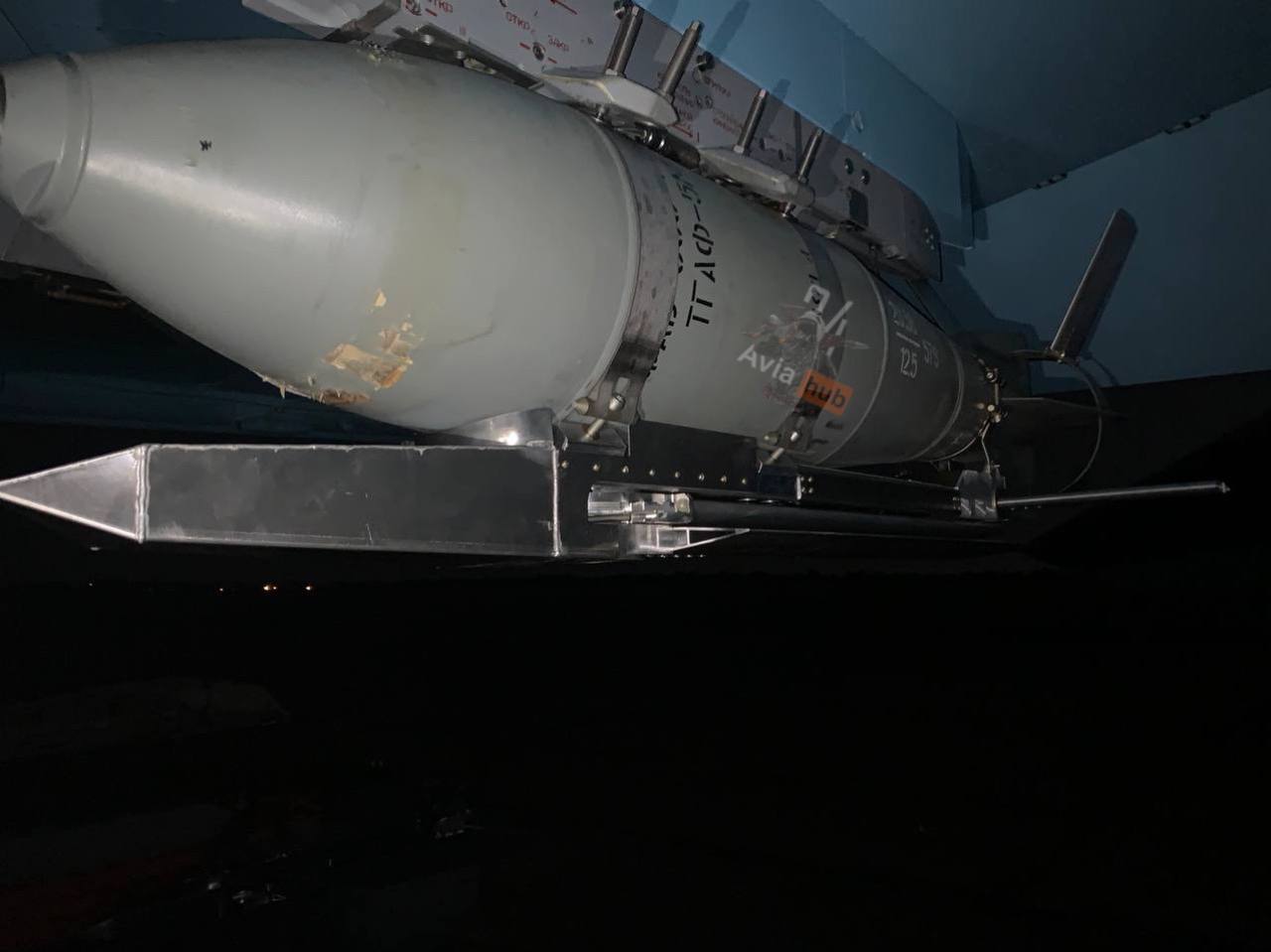
In the meantime, it’s clear that the Russian Aerospace Forces have a significant demand for standoff weapons that allow their aircraft to launch indirect attacks on targets that would otherwise expose them to unacceptable risk from Ukraine’s ever-evolving anti-aircraft defenses.
As Russian forces continue to make headway on the ground, especially in the east of the country, the demand for such weapons is surely growing, with more targets than can be assigned to the dwindling stocks of more expensive and complex standoff weaponry, such as the Grom tactical missile, which you can read more about here, and which has only rarely been seen in use.
These inventory shortfalls are also very likely a major reason why short-range ballistic missiles (SRBMs) provided to Russia by North Korea have also been used in Ukraine in recent weeks.
It’s very likely that the UMPB also incorporates various improvements compared with the earlier UMPK. It’s notable that an online critical analysis of the UMPK kit, supposedly conducted anonymously by an employee of a Russian company, suggested poor performance and a high failure rate.
The Fighterbomber channel on Telegram, which has close ties to the Russian armed forces, described the UMPK as a makeshift device that still needs a lot of work. “Of course, it has flaws, because it was made in a rush,” it stated.
Even so, however, the UMPK has been repeatedly highlighted by Ukrainian officials as a particularly vexing threat. It may lack accuracy and reliability, but the ones that do work still impact a general target area, causing significant destruction.
Back in April 2023, Yurii Ihnat, a Ukrainian Air Force spokesperson, said that the Russians “launch them from Su-35 Flanker and Su-34 Fullback aircraft, which do not enter our air defense zone.” Since then, there have been repeated statements from Ukrainian officials reflecting on the difficulty of intercepting the UMPKs, which have been described as “almost impossible to shoot down.”
With that in mind, it seems likely that the new UMPB will only compound those problems. But if the UMPB is suitable for being fired from rocket artillery, specifically 300mm tubes like those used by the modern Tornado-S multiple rocket launcher, it could introduce an all-new capability and a very troubling one for Ukraine.

Evidence in favor of this possibility includes the reported UMPB D-30SN designation, in which the 30 could refer to the weapon’s diameter of 300mm/30cm. Interestingly, the aforementioned KAB-250L laser-guided bomb, on which some suggest the weapon is based, also has a diameter of 300mm, but this may be entirely coincidental.
If this ends up being the case, the UMPB would once again appear to have more in common with the aforementioned Ground Launched Small Diameter Bomb (GLSDB) than the air-launched Joint Direct Attack Munition – Extended Range (JDAM-ER), for example, another weapon employed by Ukraine.
The GLSDB takes the widely used air-launched Small Diameter Bomb and turns it into a ground-launched weapon that, in Ukrainian hands, is able to be quickly targeted and hit non-mobile targets far behind Russian lines with great precision. It is GPS/INS guided.
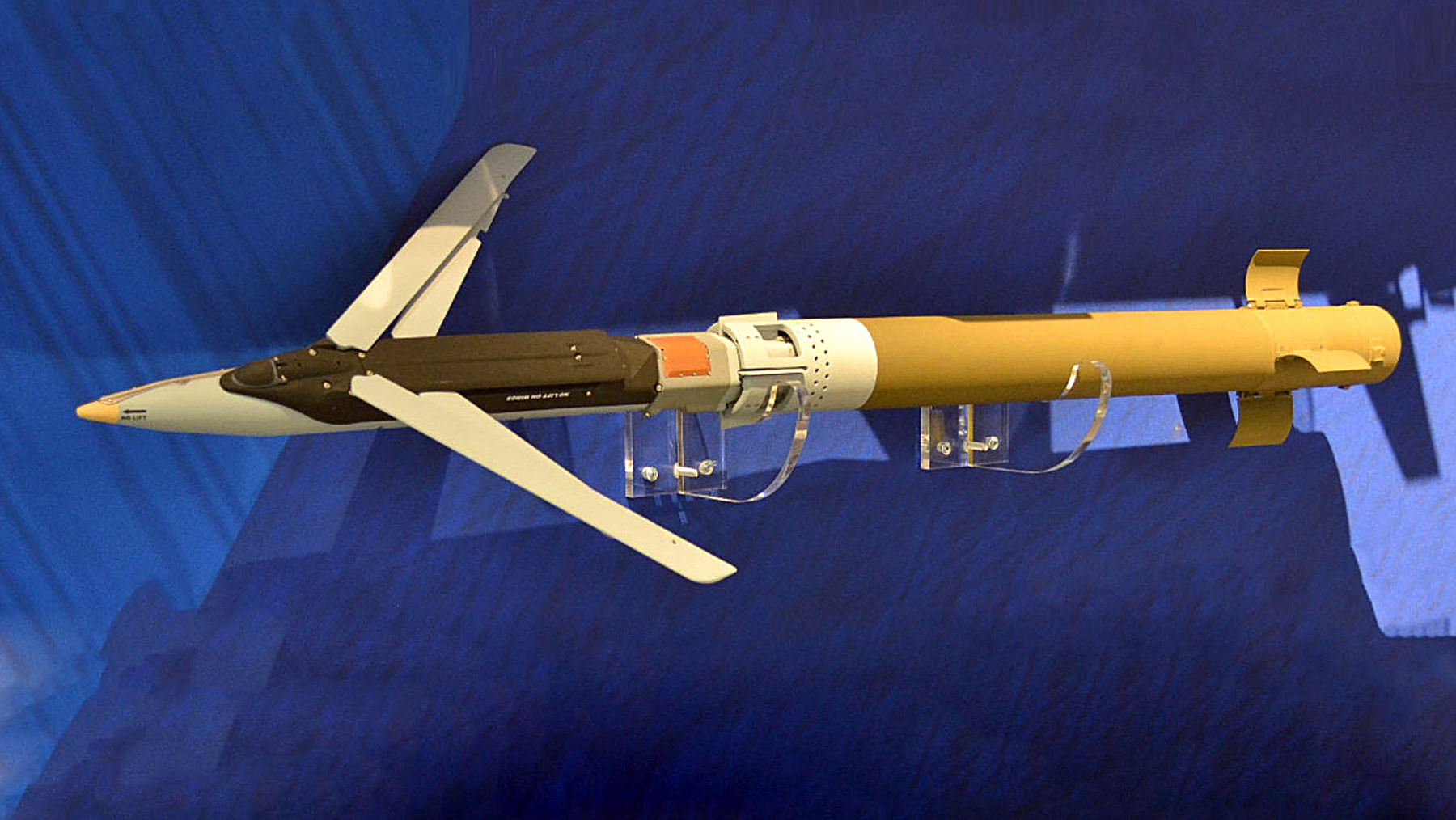
A similar weapon would be very useful for Russia, too, bearing in mind its extensive stocks of multiple rocket launchers. The fact that the same weapon can also be launched from the air is meanwhile a big advantage in terms of commonality.
A ground-launched UMPB would require some kind of booster, for the initial loft phase, in much the same way that the GLSDB employs the motor from the 227mm-caliber M26 artillery rocket. The M26 is among the rocket types that can be fired from M270 Multiple Launch Rocket System (MLRS), and variants thereof, and the M142 High Mobility Artillery Rocket System (HIMARS).
Combining the UMPB with a rocket motor, whether from an existing rocket projectile or something else, wouldn’t appear to be too complex a proposition.
While we have no idea of the kind of range a ground-launched UMPB might achieve, the GLSDB can hit targets at around 94 miles. The GLSDB uses the same 250-pound SDB munition, which is somewhat comparable with Russian descriptions of the UMPB carrying a 220-pound warhead. Provided it has a similar kind of booster, it’s certainly conceivable, therefore, that the UMPB could attain a range at least approaching this. That would offer significantly greater reach than Russia’s standard 300mm artillery rockets, which have a typical range of around 44 miles, while extended-range versions can reach out to 56 miles. Leveraging these large rockets, a UMPB boosted by them could significantly exceed the reach of GLDSB.

In the past, we have described Ukraine’s GLSDB as filling a niche between the M31 guided rockets fired by HIMARS and available cruise missiles. An artillery-fired UMPB could potentially do very much the same for Russia, acting as a precision weapon with a range between rocket artillery and highly expensive cruise missiles or easier-to-shoot-down one-way attack drones.
For air launch, just having a more purpose-built glide bomb with greater precision would be worthwhile. One of the criticisms of the unpowered UMPK was its failure to deliver on its promised range. Reportedly, poor aerodynamic characteristics resulted in a range “much smaller” than the widely reported (but unofficial) 44 miles, which would have put it in a similar class to the JDAM-ER.
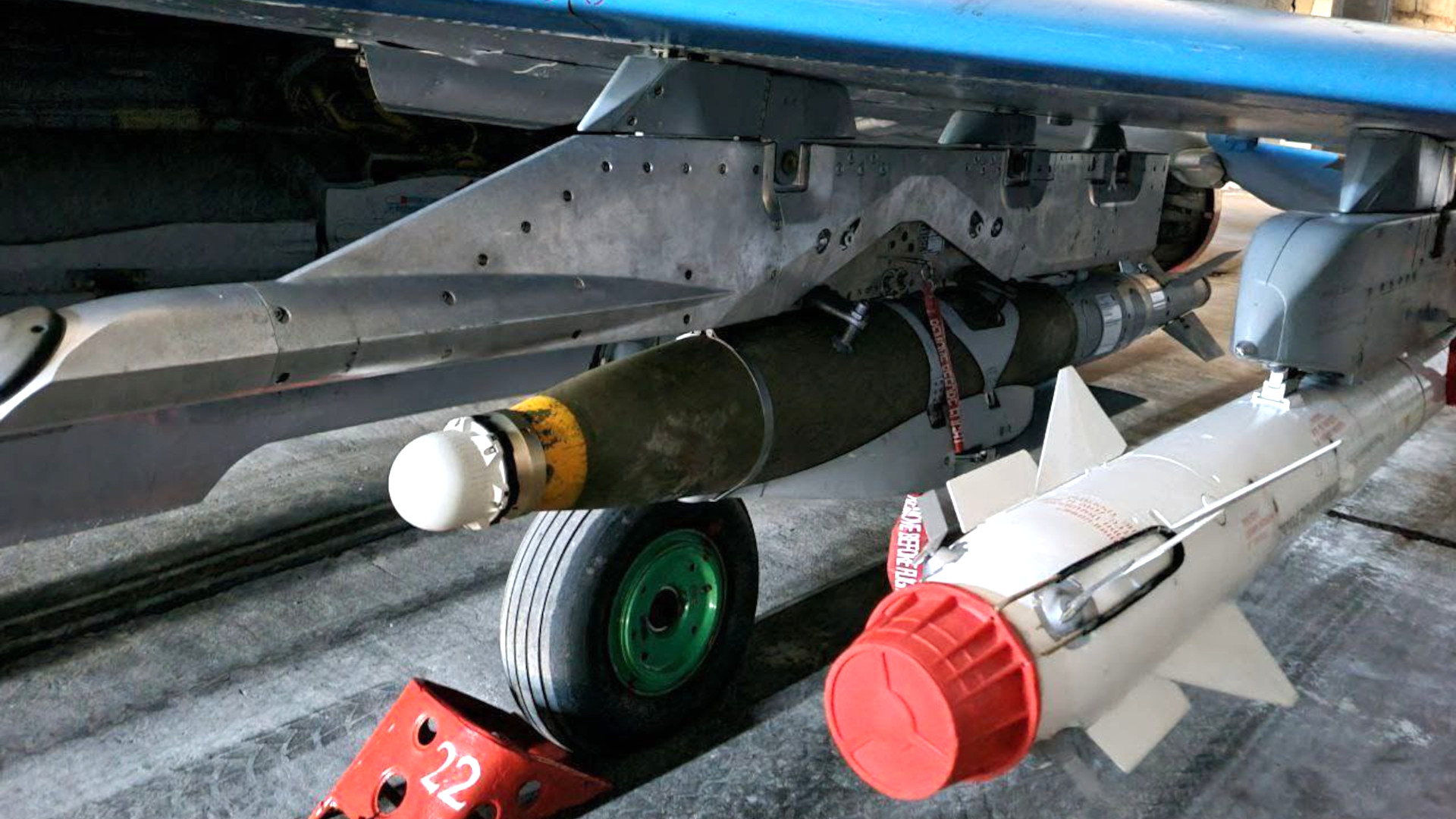
Russia would appear to have an urgent need for a longer-range air-launched glide weapon, with a recent spike in losses of tactical aircraft — according to Ukrainian sources, at least. This attrition, if confirmed, would suggest that these Russian aircraft are operating closer to Ukrainian ground-based air defense systems than was previously the case. This may be a result of the need to provide support to Russian forces making advances on the ground or could be due to increasingly bold tactics by Ukrainian surface-to-air missile operators, perhaps those using the Patriot air defense system, in particular. Very likely, it’s a combination of these factors, but either way, it seems that the standoff range provided by the unpowered UMPK is lacking and the UMPB could address this.
As for where this weapon came from, that isn’t clear. It could have been rapidly developed for the war in Ukraine to address deficiencies in Russia’s arsenal. On the other hand, it wouldn’t be surprising if Russia was already working on its own copy of the hugely successful SDB. This would especially be relevant for internal carriage on its Su-57 Felon fighter aircraft, as well as external carriage on its fourth-generation fighters and strike jets.

Whatever the case, Russia introducing its own version of the Small Diameter Bomb, or at least a far more efficient and reliable glide bomb, is bad news for Ukraine. If it can be launched from the ground in a time-sensitive manner, it could put Ukrainian high-value targets, like air defense systems, at risk in greater quantities than ever before.
Contact the author: thomas@thewarzone.com
